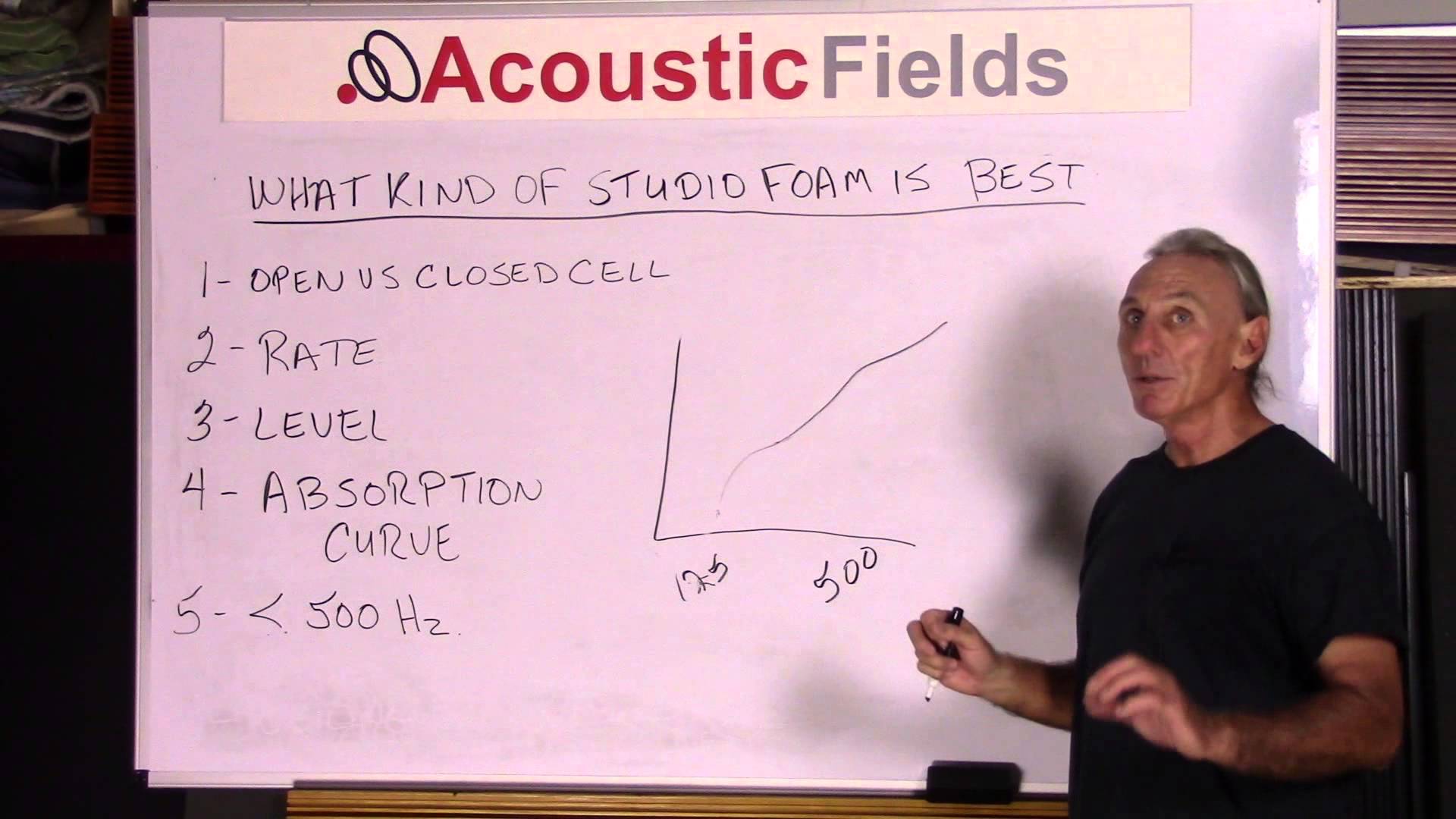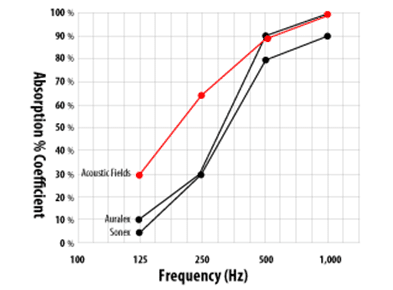This blog has been updated since its original posting, these updated reflect new information regarding recording studio foam. Updated on 12/2/19.
Today we’re going to talk about what kind of recording studio foam is best. I hate these superlative words like good, better, best, because acoustics is an exact science in some ways but very subjective in others and I think these superlatives have been distorted and misused a lot of times in the literature. What kind of recording studio foam is best? Let’s look at definitions here because people are kind of confused about what foam really is and what it really does.
Open-cell Versus Closed Cell
With open-cell acoustical foam, the structure of the cell is open. Sound enters, friction is generated and heat is the byproduct. We have an energy transformation, thus absorption. The open-celled foam allows air movement to flow over the foam and create the necessary friction which gives us the rate and level of absorption.
Closed-cell foam is the foam that’s in the seat cushions of your couch, in your car seats, etc. It’s a denser compact foam. Now it can be used for low-frequency absorption and we have some test results on that and we actually used it inside some of our prototypes when we were developing our carbon technology but when we found carbon we quickly went to that because the results were so much more superior. So let’s stick with the open-celled designed foam because that’s what we want to use in acoustics.
What’s The Important Thing? What Kind of Recording Studio Foam is Best?
You want to look at the rate, okay. How much absorption occurs? What frequency and how much in each frequency occurs? What is the slope of the curve? Is it straight-line? Does it gradually go up? Is it a hundred percent all the time? This is what you have to look at and then you take that rate and apply it to the particular room usage that you’re dealing with because reflection management is all about rate and level. How does it absorb and at what frequency does it absorb at? Most foams, the lowest frequency they go to is a hundred twenty five
You want to look at the rate, okay. How much absorption occurs? What frequency and how much in each frequency occurs? What is the slope of the curve? Is it straight-line? Does it gradually go up? Is it a hundred percent all the time? This is what you have to look at and then you take that rate and apply it to the particular room usage that you’re dealing with because reflection management is all about rate and level. How does it absorb and at what frequency does it absorb at? Most foams, the lowest frequency they go-to is a hundred twenty-five cycles and if you use that as your benchmark you’ll be good.
Above 500 Hz.
From 125 Hz. – 500 Hz. is the critical area. What we’re really talking about with foam is from one twenty-five to five hundred. This is our critical area of absorption. So if we hit a hundred percent at 500 Hz, how do we get there from one twenty-five? We can go straight line. We can start smoothly and gradually go up. We can absorb more of some frequencies and less of others.
Noise: https://en.wikipedia.org/wiki/Noise
The thinking is trying to absorb as much energy as you can at all frequencies. This is a design parameter that is associated with noise, not music and voice. Music and voice are different and require different rates and levels of absorption than noise. Our foam is not developed under those noise design parameters and we don’t believe through our testing and research that that’s the best approach. We like a more gradual approach to foam. We like to have a nice smooth absorption curve and get from one twenty-five to five hundred cycles in a different manner as you can see below which compare our test results against others on the market.
So the absorption curve, the rate and the level at which the recording studio foam absorbs are very critical. Why is it critical? Because voice and music have different requirements. Designing a foam to do both is difficult. Designing a foam that does one really better than the other is not so difficult but getting a foam that does both requires a lot of research and design and we feel we’ve got really close with our absorption curves on our two-inch foam and our one-inch foam is pretty close to what we wanted also.
Below 500 Hz.
The big thing is less than five hundred cycles forget about anything above five cycles. Look at how the companies perform below five hundred and do not think that a hundred percent absorption at all frequencies is necessary, it’s not. You don’t need to absorb a hundred percent of anything in order to manage it. If you absorb a hundred percent of anything it’s lost forever and with the price of our gear today, if you break that down into the cost of per dB of energy that’s put into your room, why would you want to absorb all that energy in order to manage it? Well, you don’t.
125 Hz. – 500 Hz.
You want to take parts of it and you want to decide how much at 250 Hz. do I absorb, how much at one twenty-five do I absorb it and how much at five hundred do I absorb and what do I do in between to get the desired results? And this is what are our research and development has taught us. I spent eight years in conference rooms and music rooms, so between voice and music we were able to synthesize this curve.
What kind of recording studio foam is best? The one that deals with 125 Hz. to 500 Hz. and does it in a nice, smooth and orderly fashion, which is a good balance for music and speech. You must have linearity in absorption. There can be no spatial irregularities in the frequency response of the absorption coefficient curves.
Studio Pro Foam: https://www.acousticfields.com/product/acoustic-foam/
In Summary
I hope this explanation helped. You can see our proprietary recording studio foam on this page. If you want to learn more about this subject please sign up for our free room acoustic treatment videos and ebook which provide step by step instructions on all major room acoustic issues. Get instant access by signing up now. If you would like your room acoustic issues analysed for free by me then please fill in the form here and I will be happy to take a look for you.
Thanks
Dennis








